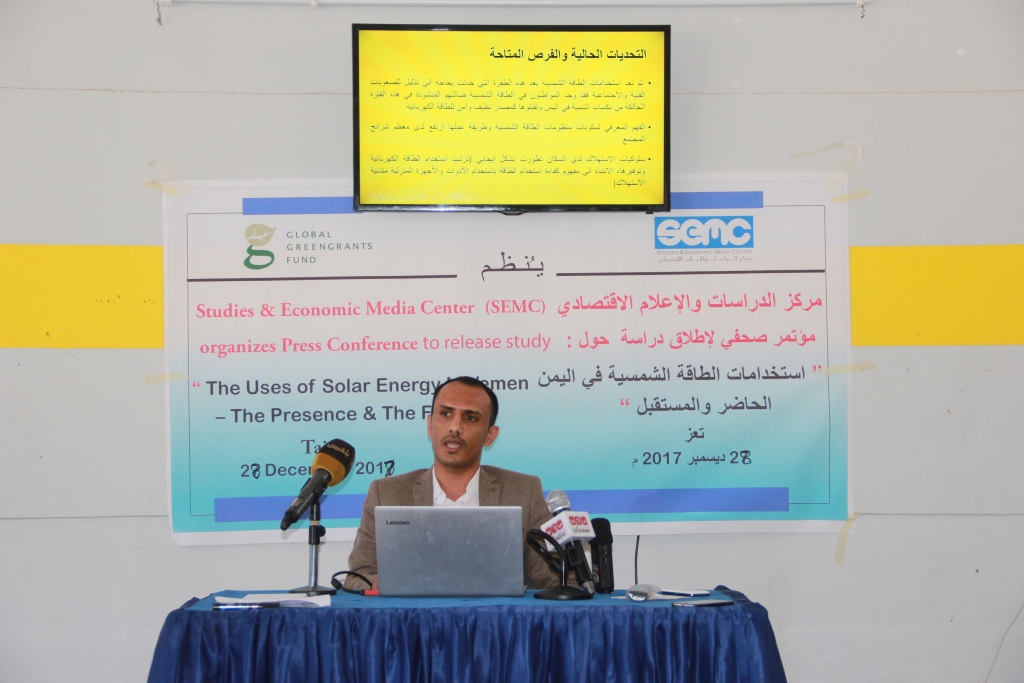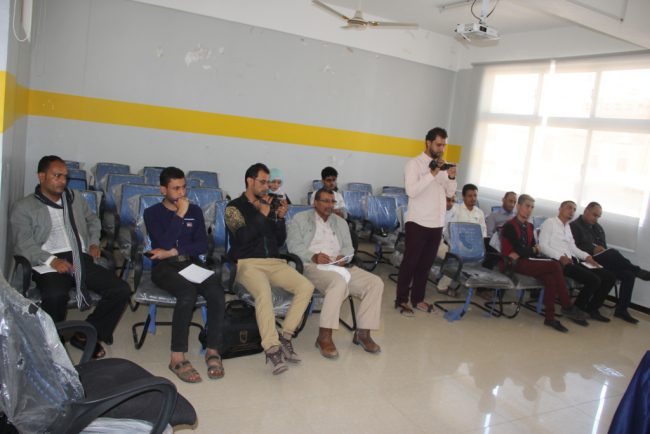Producing 1 Gigawatt of solar energy will save $600 million per year
The Studies and Economic Media Center (SEMC) launched a policy paper on the use of solar energy and its future in Yemen during a press conference in Taiz held by the center in cooperation with the Green Grants Fund. https://www.goldufo.com The executive director of the center, Mohamed Ismail, said during the press conference that the launch of the policy paper, uses of solar energy in Yemen – the present and future, is at the heart of the center’s mandate as a think tank concerned with studies, visions and policies in various economic aspects, especially that the use of solar energy has gained increasing importance for many Yemeni households.
Ismail mentioned during the review of the policy paper that the Yemeni government should take advantage of the available opportunities to move towards adopting strategies, plans and programs that lead to the use of clean energy instead of diesel and petrol, which cost the state large amounts of money. asics duomax Ismail added that the increasing public awareness of the importance of solar energy and the importance of rationalizing energy use represent one of the most important opportunities that will help the country move widely towards adopting alternative energy, both in rural and urban areas.
The paper referred to the government plans to adopt renewable energy in Yemen that began in 2007. It pointed out that the project, Promoting the Use of Solar Technology, presented by the Ministry of Industry and Trade in 2014 was the first genuine initiative by the government in the right direction, though it faltered.
The paper prepared by the expert in environment and energy, Dr. nike air max tn Omar Al-Saqqaf, reviewed the applications of solar energy. nike free run The total installed capacity of the solar energy systems according to some estimates is 300 megawatts of photovoltaic solar systems installed during 2015-2017 in urban and rural Yemen. Many farmers have resorted to solar pumping schemes recently.
The paper summarized the main challenges facing the solar energy which are also faced by the Yemeni citizens such as economic inflation and devaluation of the currency. These factors weaken the purchasing power of imported solar systems. Besides, the absence of quality control has led to flooding the market with fake products, which, according to the paper, has been reflected negatively on the citizens’ side as an adverse reaction to the use of solar energy.
The paper showed that the use of solar energy in Yemen and the renewable energy sources it is endowed with will provide the Yemeni economy with huge economic returns of hard currency by saving 675 thousand Ton of fossil fuel (petrol and diesel) worth about $600 million in every one gigawatt of generated electricity.
The paper mentioned another economic benefit for using solar energy in Yemen which would be selling carbon credits received by the solar energy projects in the global carbon market. These credits are earned for reducing emissions of greenhouse gases.
The paper presented options for large-scale solar energy in Yemen such as large-scale solar farms and the traditional systems that are isolated from the public electricity grid, as well as solar roofs for the sale of generated energy and the investment in solar energy to achieve sustainable agricultural development.
The paper included a number of recommendations, namely the need to use reconstruction programs to implement solar energy projects in water and sanitation services and sustainable agricultural activities, in addition to the rehabilitation of government facilities and the establishment of a fund to support solar systems for the poor.


COMMENTS